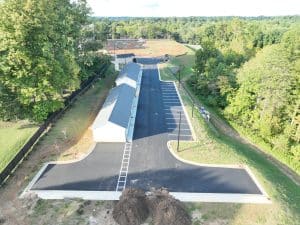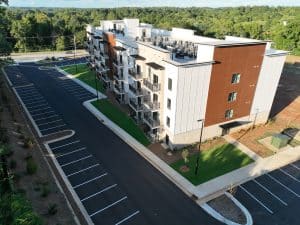Bicycling has become a significant trend worldwide, with more people embracing this eco-friendly and healthy mode of transportation. Whether for commuting, fitness, or recreation, the demand for bicycle trails is on the rise. Among the various materials used for constructing these trails, asphalt stands out as the preferred choice. Let’s explore why asphalt is becoming the go-to material for bicycle trails and how this trend is shaping communities.
Why Asphalt is the Preferred Choice for Bicycle Trails
Smooth and Comfortable Ride
One of the primary reasons asphalt is favored for bicycle trails is its smooth surface. Unlike gravel or dirt paths, asphalt provides a seamless riding experience, reducing vibrations and ensuring a comfortable ride. This is particularly important for long-distance cyclists and those who commute daily by bike. The smoothness of asphalt trails also minimizes wear and tear on bicycles, saving riders from frequent maintenance issues.
Durability and Longevity
Asphalt is known for its durability and ability to withstand heavy use. Bicycle trails, especially in urban areas, see a lot of traffic, not just from bikes but also from pedestrians, skaters, and sometimes maintenance vehicles. Asphalt can handle this load without deteriorating quickly, making it a cost-effective option in the long run. Properly maintained asphalt trails can last for decades, providing a reliable surface for cyclists year after year.
Weather Resistance
Another advantage of asphalt is its resilience to various weather conditions. It performs well in both hot and cold climates, making it suitable for regions with diverse weather patterns. Asphalt’s ability to expand and contract with temperature changes without cracking significantly contributes to its longevity. This makes it an ideal material for bicycle trails in areas that experience harsh winters or scorching summers.
Quick and Cost-Effective Installation
Installing asphalt trails is a relatively quick and straightforward process. Asphalt paving can be done efficiently, reducing the downtime of the trail during construction. This is a significant advantage for communities looking to expand their bicycle infrastructure rapidly. Moreover, asphalt is a cost-effective material compared to concrete or other paving options, making it an attractive choice for municipalities with budget constraints.
Aesthetic Appeal
Asphalt trails offer a clean and uniform appearance that blends well with natural surroundings. The dark color of asphalt provides a striking contrast to greenery, enhancing the visual appeal of parks and recreational areas. This aesthetic appeal encourages more people to use the trails, promoting outdoor activities and a healthy lifestyle.
Trends Driving the Popularity of Asphalt Bicycle Trails
Sustainability and Eco-Friendliness
As the world becomes more conscious of environmental issues, sustainable infrastructure is gaining importance. Asphalt is a recyclable material, and many asphalt trails are constructed using recycled materials, including old asphalt. This reduces the carbon footprint associated with new construction and supports the circular economy. Communities are increasingly adopting asphalt trails as part of their green initiatives to promote sustainable transportation and reduce reliance on cars.
Urbanization and Smart City Initiatives
With the rapid urbanization of cities, there is a growing need for efficient and accessible transportation networks. Bicycle trails are an integral part of smart city planning, providing a viable alternative to congested roadways. Asphalt trails are being integrated into urban landscapes to connect residential areas with commercial and recreational hubs. This integration supports the vision of walkable and bike-friendly cities, enhancing the quality of life for residents.
Health and Wellness Trends
The emphasis on health and wellness is another factor driving the popularity of bicycle trails. Communities are investing in infrastructure that encourages physical activity and outdoor recreation. Asphalt bicycle trails provide a safe and inviting environment for people of all ages to engage in cycling, walking, and jogging. This trend aligns with public health goals to combat sedentary lifestyles and promote active living.
Tourism and Economic Benefits
Bicycle tourism is a growing industry, with cyclists seeking scenic and well-maintained trails for their adventures. Communities that invest in asphalt bicycle trails attract tourists, boosting local economies. These trails often become destinations in themselves, drawing visitors to explore parks, nature reserves, and urban areas. The economic benefits of bicycle tourism, combined with the low maintenance costs of asphalt trails, make this a wise investment for many regions.
Conclusion
The growing trend of using asphalt for bicycle trails is driven by its numerous benefits, including a smooth ride, durability, weather resistance, quick installation, and aesthetic appeal. As communities prioritize sustainability, urbanization, health, and tourism, asphalt trails are becoming a cornerstone of modern infrastructure. By embracing this trend, cities and towns can create safer, more accessible, and more enjoyable environments for cyclists and outdoor enthusiasts. Whether you’re a seasoned cyclist or just starting, you’ll likely appreciate the advantages that asphalt bicycle trails bring to your ride.






